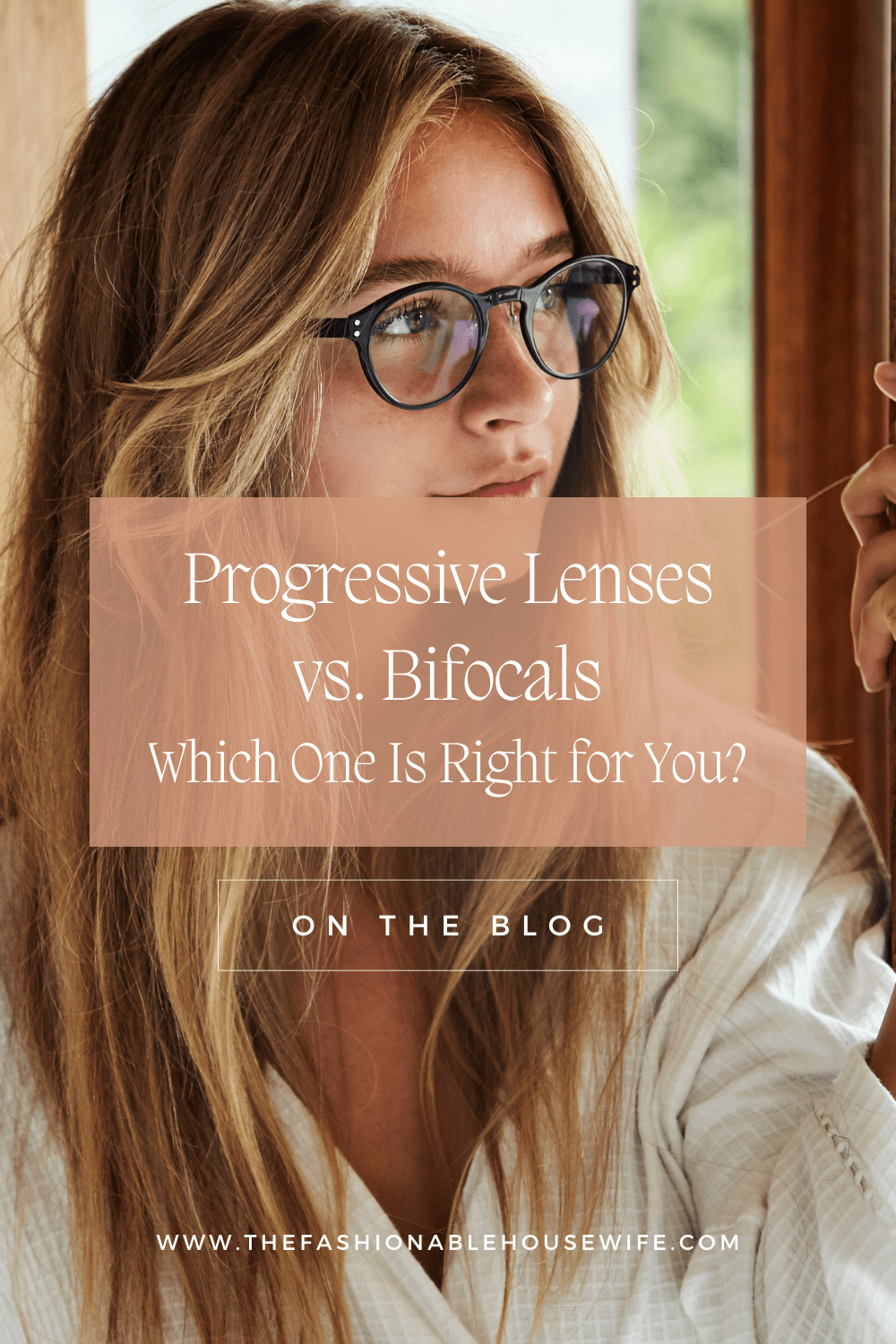Progressive Lenses vs. Bifocals: Which One Is Right for You?

As we age, our eyesight naturally evolves, and one of the most common conditions people face is presbyopia—a gradual loss of the eye’s ability to focus on close objects. This can make daily tasks like reading, using a smartphone, or working on a computer increasingly difficult. To correct this issue, many turn to multifocal lenses, with progressive lenses and bifocals being two of the most popular choices. While they share the same purpose, their design, function, and user experience are significantly different. Choosing the right option depends on lifestyle, vision needs, and personal preferences.

A Closer Look at Progressive Lenses and Bifocals
Progressive lenses and bifocals are designed to provide clear vision at multiple distances, but they do so in different ways. Understanding how each type of lens works is crucial in making an informed decision about which suits you best.
How Progressive Lenses Work and Why They Are Popular
Progressive lenses are known for their seamless transition between near, intermediate, and distance vision. Unlike bifocals, which have a visible dividing line, progressive lenses gradually change prescription strength from the top of the lens to the bottom, eliminating the abrupt visual jumps associated with bifocals. Before they reach the consumer, progressive lenses are typically evaluated using a lens tester to ensure the accuracy of the prescription and the smoothness of the transition zones. These lenses are especially beneficial for individuals who need correction at multiple distances but want a more natural viewing experience. With no visible line separating different prescription zones, progressives are often considered the more aesthetically pleasing choice.
Who Benefits Most from Progressive Lenses?
- People who need clear vision for multiple distances.
- Individuals who work in environments requiring frequent shifts in focus.
- Those who prefer a more modern and discreet eyewear option.
Advantages of Progressive Lenses
- Smooth, natural transition between different focal distances.
- No visible line on the lens for a more aesthetic appeal.
- Ideal for multitasking without switching glasses.
Potential Drawbacks of Progressive Lenses
- Requires a longer adaptation period due to peripheral distortion.
- More expensive compared to bifocal lenses.
How Bifocal Lenses Differ and Why Some Prefer Them

Bifocal lenses have been a traditional solution for presbyopia for decades. These lenses are designed with two distinct prescription areas—one for distance vision at the top and another for near vision at the bottom—separated by a visible dividing line.
Unlike progressives, bifocals provide an instant transition between near and far vision, making them a preferred option for those who find progressive lenses difficult to adjust to. However, the sudden jump between prescriptions can feel unnatural to some users.
Who Benefits Most from Bifocal Lenses?
- People who primarily need correction for reading and distance vision.
- Those who prefer a simple lens design with an easier adaptation period.
- Individuals looking for a more budget-friendly option.
Advantages of Bifocal Lenses
- Immediate transition between near and far vision.
- Easier to adjust to compared to progressive lenses.
- More affordable than progressive options.
Potential Drawbacks of Bifocal Lenses
- The visible dividing line can be distracting or unappealing.
- The abrupt jump between prescriptions can cause discomfort.
- Not ideal for intermediate vision tasks, such as computer use.
Comparing Progressive Lenses and Bifocals: What Sets Them Apart?
To better illustrate the differences between progressive and bifocal lenses, here’s a quick comparison:
| Feature | Progressive Lenses | Bifocal Lenses |
| Design | No visible line; gradual power shift | Visible dividing line between zones |
| Vision Transition | Seamless progression across distances | Sudden jump between near and far vision |
| Ease of Adaptation | Longer adjustment period | Easier to adapt to |
| Aesthetics | More discreet, no visible lines | Visible line may be noticeable |
| Cost | More expensive | More budget-friendly |
How Design Affects Your Visual Experience
One of the most noticeable differences between progressives and bifocals is their design. Progressive lenses have a smooth, gradual change in prescription power, making them ideal for people who need continuous vision at different distances. Bifocals, on the other hand, have a clear division between near and far vision, which can sometimes cause a jarring shift when switching focus.
Adjusting to Progressive Lenses vs. Bifocals
The adaptation period can vary significantly between these two lens types. Progressive lenses require a longer adjustment period, as users must learn to look through different parts of the lens to access different vision zones. Bifocals, in contrast, have a shorter adaptation phase since there is no gradual transition—just two distinct areas to get used to.
Factors to Consider When Choosing Between Progressive and Bifocal Lenses

Your lifestyle, budget, and personal preferences play a major role in deciding between progressive and bifocal lenses. Consider the following factors:
- Vision needs – Do you need correction for near and far distances only, or do you also need help with intermediate vision?
- Daily activities – Do you spend a lot of time on the computer or reading documents?
- Aesthetic preferences – Do you prefer a lens without a visible dividing line?
- Adaptation comfort – Are you willing to go through an adjustment period for a more natural experience?
- Budget – Progressive lenses tend to be more expensive than bifocals, but they provide greater convenience.
Understanding the Cost Differences Between These Two Lens Types
Progressive lenses tend to be more expensive than bifocals due to their advanced design and customization options. Their seamless transition between vision zones and enhanced visual comfort contribute to the higher cost. Additionally, optional coatings such as anti-reflective treatments, blue light protection, and scratch resistance can further impact the overall price.
Other Lens Options for Presbyopia
If neither progressive nor bifocal lenses seem like the perfect fit, there are alternative options:
- Trifocal lenses – Provide three vision zones: near, intermediate, and distance.
- Occupational progressive lenses – Designed for specific tasks, such as extended computer use.
- Single-vision reading glasses – A simple and cost-effective solution for near vision needs.
- Multifocal contact lenses – Available for those who prefer not to wear glasses.
Caring for Your Lenses to Maintain Clarity and Longevity
To ensure your lenses stay in top condition, follow these best practices:
- Always clean your lenses with a microfiber cloth.
- Avoid using harsh chemicals that can damage coatings.
- Store your glasses in a protective case to prevent scratches.
For the best experience, consider adding lens coatings such as anti-reflective treatment, UV protection, and blue light filtering to enhance visual comfort and lens durability.
Making the Right Choice for Your Vision Needs
Both progressive and bifocal lenses offer unique advantages, but the right choice depends on what works best for your vision needs and lifestyle. If you prioritize seamless, natural vision and aesthetics, progressives might be your best bet. If you value immediate adaptation and affordability, bifocals could be the way to go. Consulting with an eye care professional will help ensure you make the most informed decision for your eyesight.

